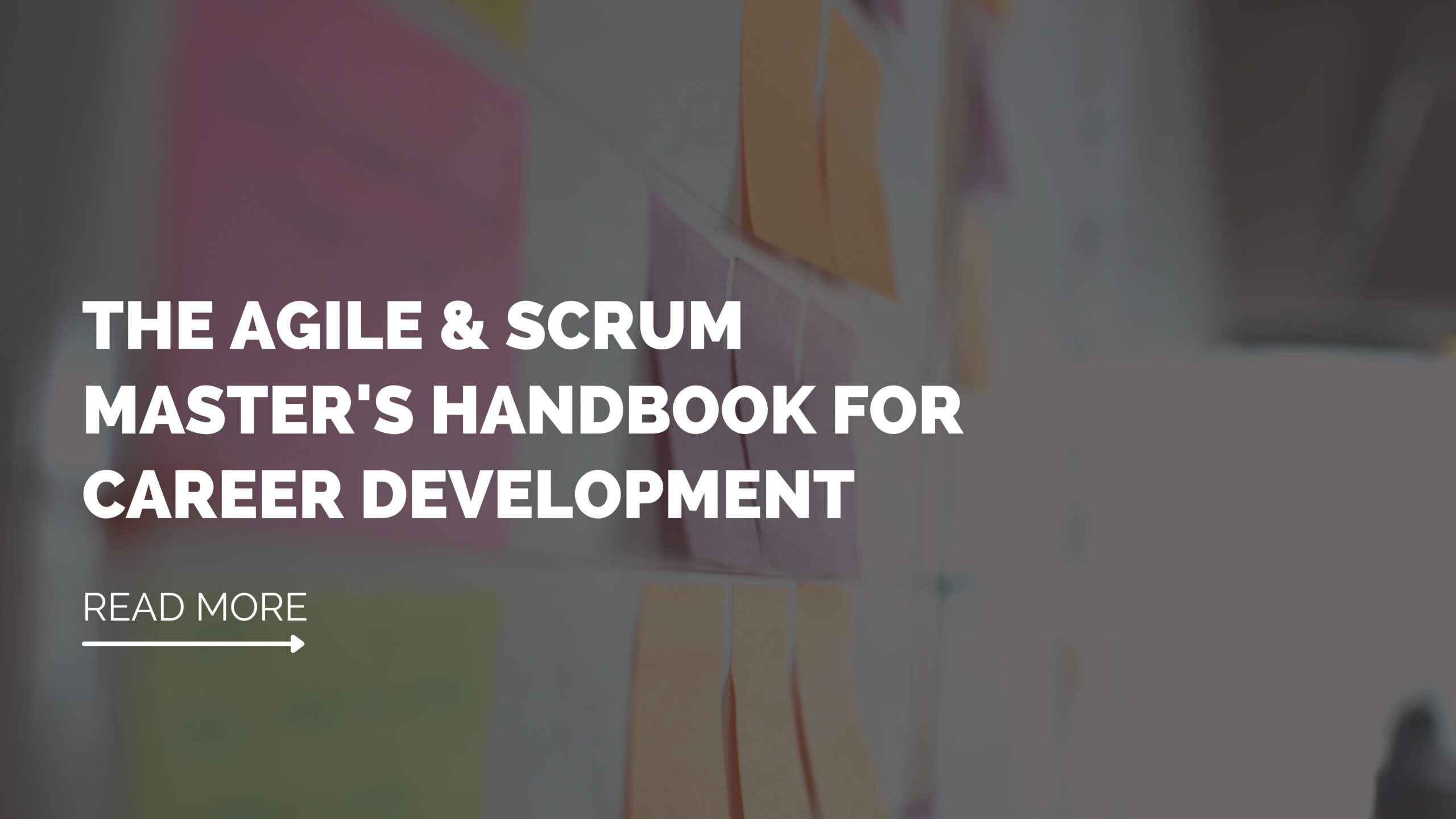As a software engineer, you have likely heard about Agile and Scrum mindsets. These project management approaches have become increasingly popular in recent years, especially in the software development industry. If you are considering a career as an Agile or Scrum Master, it is important to understand what these roles entail and how they benefit your career development.
First of all,
What is Agile all about?
Agile is a project management framework that prioritizes flexibility, collaboration, and adaptation. It is based on the Agile Manifesto, which outlines the key principles of Agile development. The manifesto emphasizes delivering working software frequently, welcoming changes in requirements, and fostering close collaboration between the development team, customers, and stakeholders.
And Scrum?
Scrum is a specific implementation of Agile mindset that is designed for software development teams. It is an iterative and incremental approach that involves cross-functional teams working together to deliver high-quality software in a time-boxed manner. The Scrum framework includes roles, events, and artifacts that help teams work together efficiently and effectively.
A Guide to a Scrum & Agile Master’s Role
As an Agile or Scrum Master, you will play a critical role in facilitating the implementation and adoption of Agile and Scrum mindsets in your organization. Your responsibilities will include leading cross-functional teams, facilitating Scrum events, removing roadblocks, and helping teams adhere to the Agile and Scrum principles.
Here are some key benefits of a career as an Agile or Scrum Master:
Career growth opportunities
As organizations continue to adopt Agile and Scrum mindsets, there is an increasing demand for skilled Agile and Scrum Masters. By pursuing a career in this field, you will have access to a range of growth opportunities, including leadership roles in software development teams and organizations.
Improved project outcomes
By implementing Agile and Scrum mindsets, organizations can improve project outcomes, including faster time-to-market, better product quality, and increased customer satisfaction. As an Agile or Scrum Master, you will be instrumental in driving these outcomes and will have the satisfaction of seeing the results of your efforts.
Increased collaboration and teamwork
Agile and Scrum mindsets prioritize collaboration and teamwork. As an Agile or Scrum Master, you will play a key role in fostering a culture of collaboration and teamwork, helping teams work together more effectively and efficiently.
Exposure to a range of industries
Agile and Scrum mindsets are widely adopted across a range of industries, including software development, finance, healthcare, and more. As an Agile or Scrum Master, you will have the opportunity to gain exposure to different industries and learn about their unique challenges and opportunities.
Continuous learning and development
Agile and Scrum mindsets are constantly evolving, and as an Agile or Scrum Master, you will need to stay up-to-date with the latest trends and best practices. This will provide you with ongoing opportunities for learning and development, helping you grow your skills and knowledge over time.
How to enhance your career as an Agile & Scrum Master’s position
Once you have a solid understanding of the Agile and Scrum mindsets, it is important to gain practical experience by working on Agile and Scrum projects. You can seek out opportunities to volunteer as a Scrum Master or to participate in Agile projects within your current organization. Additionally, participating in Agile and Scrum communities and networking events help you build relationships and gain insights from experienced professionals.
To continue growing and developing your career as an Agile and Scrum Master, it is imperative to stay current with industry trends and developments. This is achieved by reading industry publications, attending conferences and attending continuous professional development opportunities.
Furthermore, in order to build a career as an Agile and Scrum Master, certifications play a crucial role in showcasing your skills and knowledge in the field. Some of the widely recognized certifications include:
- Certified Scrum Master (CSM) – This certification is offered by Scrum Alliance and covers the basic concepts, principles, and practices of Scrum.
- Professional Scrum Master (PSM) – This certification is offered by Scrum.org and is designed to evaluate a candidate’s understanding of Scrum.
- SAFe 4.0 Scrum Master – This certification is offered by Scaled Agile and covers the Scrum Master role in a SAFe environment.
- Certified Agile Scrum Master (CASM) – This certification is offered by the International Consortium for Agile (ICAgile) and covers the basics of Agile and Scrum.
Finally, excellent communication and interpersonal skills are key, as well as the ability to lead and motivate teams. As a Scrum Master, you will be responsible for facilitating the Agile process, resolving conflicts and ensuring that projects are completed on time and within budget. These skills can be honed by participating in team-building exercises, mentoring and coaching, and by taking courses in leadership and communication.
To sum everything up, building a successful career as an Agile and Scrum Master requires a combination of knowledge, experience, and personal development. By following these steps, you can achieve your goal of becoming a successful and sought-after Agile and Scrum Master.
Do you want to keep training on Agile and Scrum? We’ve got you covered. Check our positions so we can enroll you in our Trainee Program.
About ITJ
ITJ is devoted to serving fast-growing and high-value market sectors, particularly the Internet of Medical Things (IoMT), working with innovative medical device companies looking to improve people’s lives. With a unique BOT (build, operate, and transfer) model that sources only the best digital talent available, ITJ enables companies in the US to create technology centers of excellence in Mexico. For more information, visit www.itj.com.

